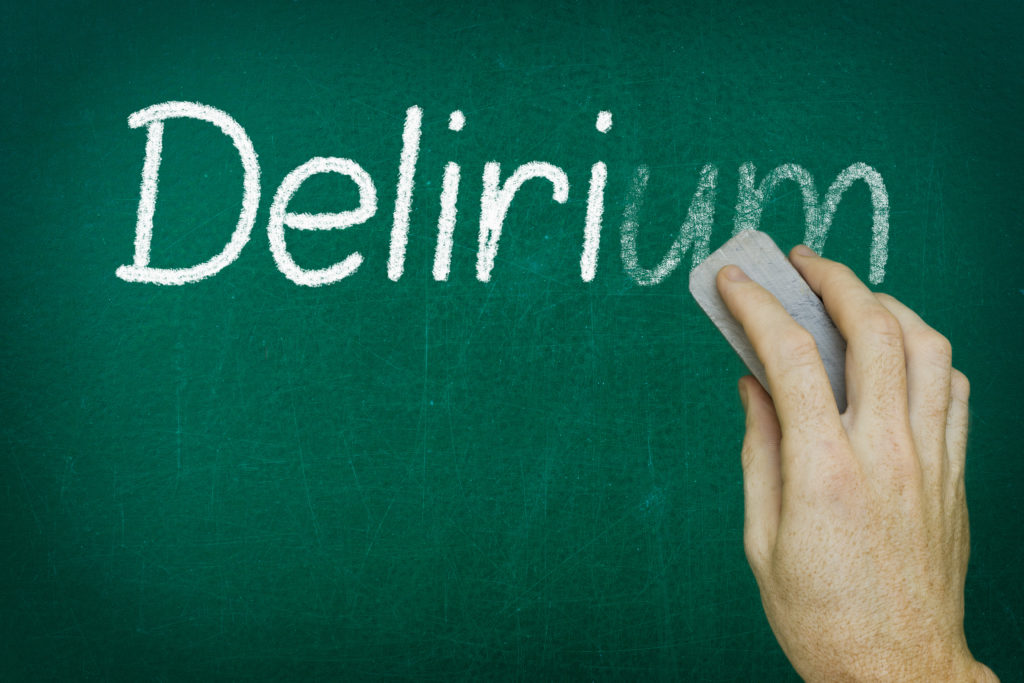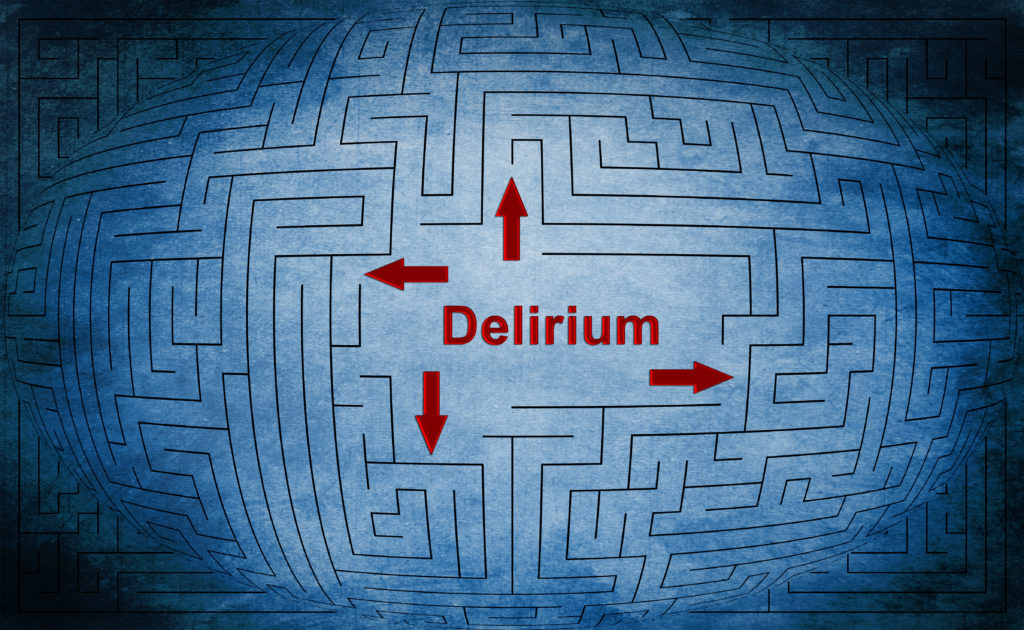There are several types of Delirium and all types are experienced in 85% of patients with a terminal diagnosis. 25% of these patients will experience Terminal Delirium (also known as Terminal Agitation), a subtype of delirium that is not reversible.
Delirium is an abrupt change to the brain. Persons with a history of anxiety associated with trauma, surgery or other psychiatric diagnoses are at greater risk of developing delirium, and so are elderly people. Persistent terminal delirium is one of the most commonly occurring symptoms among dying patients.
Delirium is often underdiagnosed, and sometimes falsely diagnosed as dementia. Knowing more about it will help you detect symptoms in your loved one, so you can bring it to the attention of the medical professionals who care for them at Our Lady of Peace.
Delirium is defined as a disturbance of consciousness characterized by a reduced ability to focus, sustain or shift attention. It presents as a change in cognition, including memory deficit, disorientation, language or perceptual disturbances. These changes cannot be associated with pre-existing dementia. Delirium develops over a short period of time (hours to days) and fluctuates over the course of the day.

There are 3 types of delirium:
- Hyperactive delirium is also known as agitated delirium and can be identified by hyperarousal, hyperalert and agitated behaviors, including hallucinations, delusions, agitation and disorientation
- Hypoactive delirium presents with hypo-arousal, hypo alert, lethargic behaviors and is most often characterized by confusion, sedation and slowed psychomotor function
- Mixed delirium has elements of both hyperactive and hypoactive delirium. It’s important to note that two thirds of all deliria are either mixed or hypoactive types
Hospice patients with hyperactive delirium are perceived as having substantial suffering, precipitating a crisis that leads to admission to a hospital or hospice residence. Patients with hypoactive delirium are frequently overlooked or misdiagnosed by clinicians because they appear to be in less stress/suffering. However, patients who have experienced ether type and recover from it, describe both as very distressing, so research now shows that distress is consistent with both hypoactive and hyperactive delirium.
Delirium Subtypes
- Classic delirium due to physiological stress, hospital or environmental stress or illness
- Sundowning stress on the vulnerable brain
- Terminal delirium/restlessness – dying is a physiological stress with spiritual overlay
What causes delirium?
Delirium is frequently caused by several underlying conditions, and untreated pain is a common cause. Pain control is critical for patient comfort during the dying process and will often minimize delirium. Here are some of the other common causes of delirium:
- Electrolyte imbalances (Hypercalcemia and glucose abnormality)
- Liver failure
- Ischemia (Hypoxia)
- Renal Failure
- Impaction of stool
- Urinary (Retention and/or Urinary Tract Infection)
- Metastases to the brain
A review of the patient’s history and medication list, a physical, and lab and other tests will assist in identifying these causes. A thorough assessment will assist in finding a full bladder or fecal impaction. A review of any medications that have side effects or have been added or increased recently will also give hints to potential causes.

Other Causes of Delirium
- Vulnerable Brain
- Aging brains experience decreased sensory perception as well as a heightened sensitivity to environmental stimuli
- Persons with dementia/cognitive impairment – 40% are hospitalized patients with dementia developed delirium. 40% of hospitalized patients with dementia/cognitive impairment develop delirium
- 100% of patients with pre-existing dementia who undergo hip/knee surgery, develop delirium
- Physiology
- Critical illness, infection, trauma, drug and/or alcohol intoxication or withdrawal
- Drug side effects, adverse reactions and interactions, and decreased clearance of drugs or by-products
- Elevated dopamine which creates psychomotor agitation, metabolic derangements, and cancer tumors that release toxins
- Dehydration often comes up when talking about delirium. However, contrary to the negative impact of dehydration in our lives, it is natural to the dying process and can actually create a comforting dream-like state
- Environment
- Sleep disturbances, as in the ICU where 1.5-hrs of sleep may be common
- Lifetime patterns of sleep deprivation
- Light disruption disturbing rhythm
- Noise disrupting sleep contributing to hallucinations
Screening for Delirium
Our Lady of Peace Uses a Nursing Delirium Screening Scale (Nu-DESC):
- Disorientation
Verbal or behavioral indication of not being oriented and day/night cycle is off
- Inappropriate Behavior
Wandering, climbing out bed if unsafe to do so, inappropriate call light use, etc.
- Inappropriate Communication
Non communicative, nonsensical, unintelligible
- Illusions/Hallucinations
Paranoia, distortion of visual objects, hallucinations
- Psychomotor Retardation
Delayed response, or no response when spoken to or touched, unable to follow simple commands
We rate each category by a family’s observation and reporting, according to the following:
0 = no symptoms
1 = mild symptoms
2 = pronounced symptoms
If the total score of the combined categories is equal to or greater than 2, then the patient is experiencing delirium and treatment and assessment of reversible causes begins, i.e., pain, full bladder, fecal impaction, hunger, thirst etc. By intervening early, a “start low and go slow” approach can be used, and acceleration of delirium can be prevented.
Delirium Prevention and Treatment
- Avoid known causes and aggravating factors
- Identification and treatment of acute underlying factors
- Prevention of further physical and cognitive decline
- Behavioral control and management
- Orientation protocol and cognitive stimulation
- Environmental modification
- Mobilization
- Visual and hearing aids
- Volume repletion in cases of dehydration; nutrition
- Interdisciplinary supportive care
*It’s important to note that restraints are not used at Our Lady of Peace.
Our overall goal is to work together with families to prevent delirium and recognize symptoms as soon as they occur, so it can be treated and, in many cases, be reversed.
